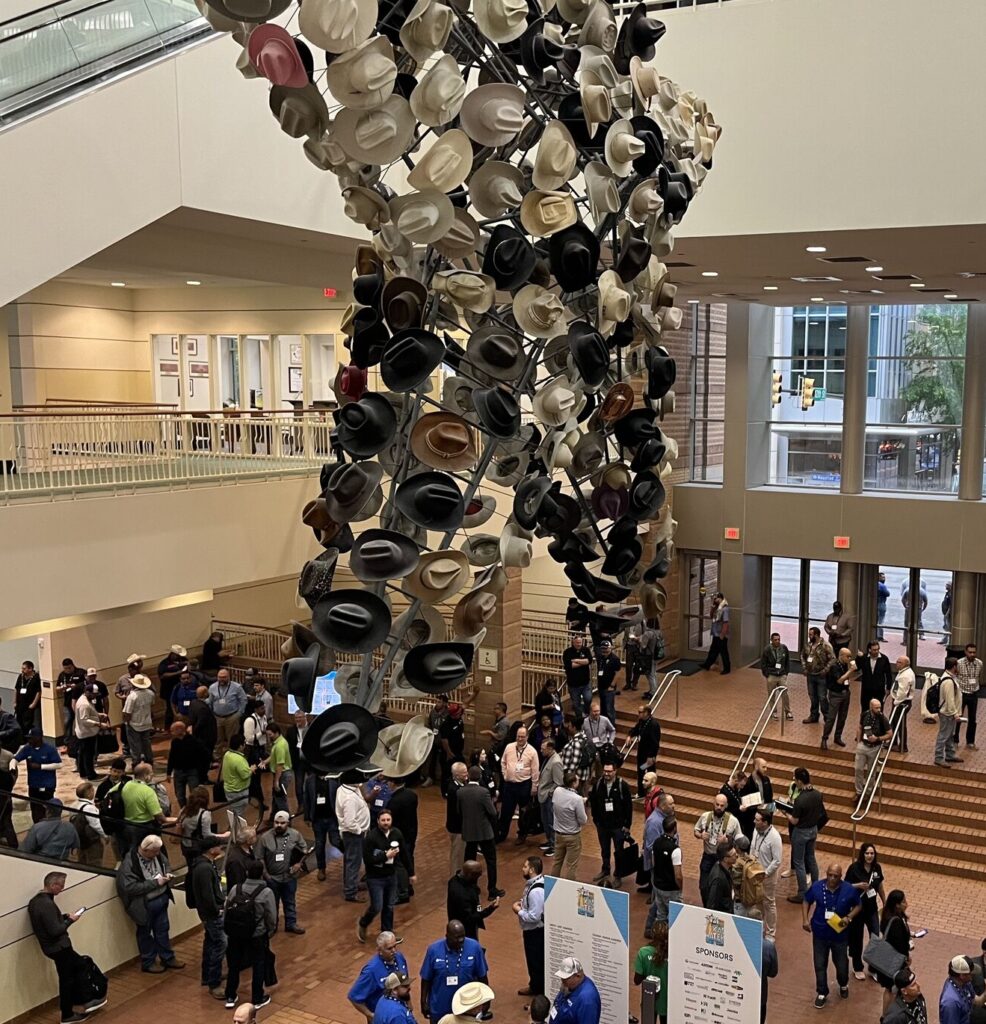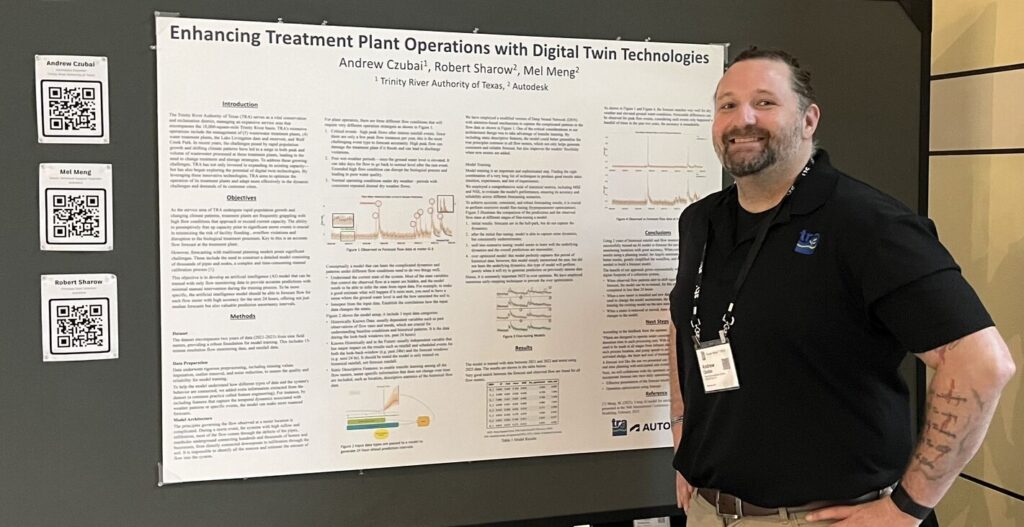& Construction

Integrated BIM tools, including Revit, AutoCAD, and Civil 3D
& Manufacturing

Professional CAD/CAM tools built on Inventor and AutoCAD
3 min read
Buckle your seatbelts, tighten your ball valves, and lock down your manholes because we’re about to explore the developments in the water industry that happened at Texas Water 2024.

Now, with an introduction like that you might be wondering: What’s so great about a regional water conference, and why should I read a blog post about it? Granted, as I sit here on the mezzanine of the Fort Worth Convention Center, reflecting on all of the great conversations I’ve had with others in the industry, and meeting Autodesk customers like LAN and Trinity River Authority, I too, am asking myself that question.
I think a lot happened at Texas water this year that gives us a glimpse into where the water industry is heading. So, join me as I flow through what happened at Texas Water 2024. Absorb some information, and I’ll do my best to keep this post free of extemporaneous contaminants.

Sensors, sensors, and more sensors. I could make up a statistic and say that nearly 30% of the sold-out booths at Texas Water involved some kind of sensor technology, either implementing the hardware or utilizing the data for operations, but that’s the marketer in me, not the hydraulic engineer. Let’s just say there was a lot of talk about sensors.
It’s clear that the water industry is shifting from outdated analog pipes of past to more connected data-driven water asset management workflows. If you work in the industry, I know you feel it too, but even at the regional and operator level, sensors – and the data they provide operators and modelers – are all the rage.

If the title of this section has you thinking our heads are going to be up in the clouds with theory, I’m sorry to disappoint you, but AI and Machine Learning had a good showing at Texas Water with practical real-world use cases. Maybe regional conferences like Texas Water are where you find ways to bridge the gap between heavy thought leadership topics and what’s actually happening in the field.

Autodesk Senior Technical Support Engineer Mel Meng, Autodesk Principal Data Scientist Robert Sharow, and Trinity River Authority Hydraulic Engineer Andrew “AJ” Czubai presented a poster on their findings around “Enhancing Treatment Plant Operations with Digital Twin Technologies” which was filled with practical use cases of AI and digital twins in water operations and management.
The team was able to ingest flow data over several years, train an AI model utilizing that data, and accurately forecast flow data into the region’s treatment plants. A forecast tool like this can be a tremendous asset for real-time planning with anticipated rain events. It’s examples like this that map the hype of AI to practical real world applications for the water industry.
I also had the pleasure of attending a session titled “Sand Filter Remaining Useful Life Prediction via Machine Learning” which was presented by students from LeTourneau University as part of the convention’s University Forum. It was a fascinating exploration of practical use cases of Machine Learning in water management, in this instance helping treatment plant operators determine optimal sand filter flushing and operation practices.

Of course, Autodesk has also been hard at work putting machine learning to work with our ML Deluge Tool for the design side of water infrastructure, which we of course talked about at the event.
Finally, I got to witness the fan favorite Biosolids Beauty Contest, where plant operators came together to showcase their biosolids treatment skills. The subject matter might in the water industry may not always be the most glamorous, but that doesn’t mean we don’t work hard to make it beautiful.
So, as Texas Water ends, I’m encouraged about the water space’s future. It was am exhibition of water professionals from all around Texas coming together to build better infrastructure with better, more connected tools, and it felt very representative of the greater United States.
Sign up for the One Water Blog newsletter, and we'll keep you updated about our top stories, along with the best content we find online. We only send out a newsletter when we have something interesting to share.
May we collect and use your data?
Learn more about the Third Party Services we use and our Privacy Statement.May we collect and use your data to tailor your experience?
Explore the benefits of a customized experience by managing your privacy settings for this site or visit our Privacy Statement to learn more about your options.